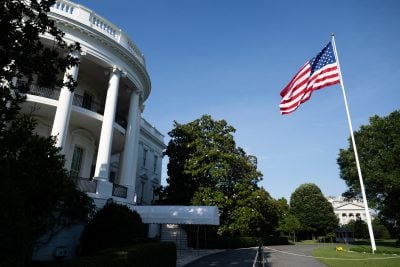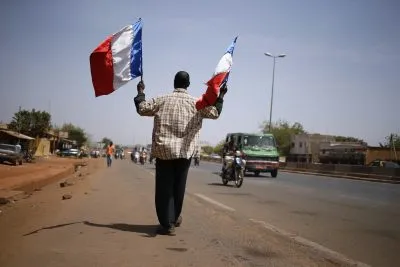Most of Africa’s rail network is dilapidated and in urgent need of modernisation. While the costs involved are high, the economic benefits across the board can be enormous. Richard Seymour reports.
As far back as 30 years ago, Africa’s railways carried a large proportion of the continent’s traffic. This had much to do with the fact that roads were notoriously poor. In addition, some companies owed their existence and success to railways and so continued to depend on them. In some cases, companies that were wholly or partially state owned were obliged to use and therefore subsidise the state-owned railway system. In the intervening years, however, the liberalisation of state economies and of railways themselves has exposed the railways to competition from an improved transport infrastructure.
Various wars have exacerbated the railways’ decline. With few exceptions, most of Africa’s rail network is disconnected. Those that exist are generally in poor condition and only serve limited routes between seaports and inland trading centres.
Many national railways simply do not carry enough traffic to justify the considerable investment needed to bring them up to standard. Competition from road (cars, buses and trucks) often renders railways unviable. However, where economic growth and population expansion have raced ahead of capacity building, railways can make sense. Nigeria is one country that had seen fit to invest heavily in its rail network. In the first half of the 20th century, Nigeria’s railways continued to expand. This was driven by British colonialism and its desire for agriculture and mineral exports. Since then the network has effectively shrunk as large sections fell into disuse with unstable government and chronic corruption being blamed for its atrophy.
Successive governments, each with different policies on the matter, have seen Nigeria’s railways bounced about like a football. Each time a decision was made, a new government would tear it up and start again. However, a period of relative political stability and rapid economic growth has encouraged approximately $10bn to be invested in Nigeria’s railways over the last decade, with many of the contracts going to Chinese companies. Indeed, in 2012, China Civil Engineering Construction Corporation (CCECC), owned by the Chinese state, was awarded a $1.49bn contract to lay a railway between Lagos and Ibadan.
Other than the economic benefits of linking major economic centres, it is hoped uniting disparate parts of the country will bring social change. The existing but dilapidated 1,10 km rail system between Lagos and Kano in the north was refurbished and reopened at the cost of $153m. This has brought the journey time down from five days to 31 hours. Kano, far in the mostly Muslim north of the country, has been left behind by the south’s economic boom. Its poverty and paucity of education making it a perfect haven for Islamic militants, from which Africa is suffering increasingly. It is hoped the reestablished rail link will help begin to redress the economic imbalance and allow Nigeria’s financial windfall to spread to all its parts.
100 kph Gautrain
While the reopened railway between Lagos and Kano rattles along at less than 30mph, in South Africa, rail passengers wishing to travel between Johannesburg and Pretoria, the country’s, economic and political centres respectively, may now do so in the air-conditioned comfort of the Gautrain – a 100mph train, built at a cost of more than $3bn. In an effort to encourage passengers to switch from cars and buses, the Gautrain, which came in considerably over budget, has strict rules on eating and drinking on board and is able to boast a 30-minute journey time, which compares very well to up to two hours on the congested roads.
The Gautrain project is intended to bring an economic boost to the country. Studies suggested that the new high-speed link would boost South Africa’s GDP significantly. Much of this did come from the construction phase as employment, subcontracting and the procurement of materials gave a much-needed shot in the arm for local businesses. In the longer term, there is good potential to regenerate areas along the route as businesses and housing make the most of being connected to main economic and political hubs. An estimated 3.5m working days per year can saved by the quicker journey times. South Africa is not stopping there. Japan, Germany and France, three countries that know a thing or two about efficient, highspeed railways, have bid to construct a rapid transit railway between the port city of Durban and Johannesburg.
Last year the South African Finance Ministry set aside more than $30bn of a much larger infrastructure budget for high-speed rail links. Of that, $18bn will be spent in two phases. The first phase, to Pietermaritzburg, will be completed by 2020 and the second phase to Johannesburg by 2025. The South African government wants to have increased rail passenger and freight by 80% by that date. Transport as a whole has been identified as a key engine of economic growth and social change in the country, with the movement of goods and people at speeds of 100 mph and 200 mph respectively seen as essential for future growth and investment.
Cautionary tale
Africa’s vast mineral wealth is proving a powerful incentive for further investment in rail infrastructure, just as it did more than a century ago. In a report by Standard Bank, an investment of $50bn over the next 10 years has been identified as vital to fully realise the potential. In the last decade, Africa has increased its exports of minerals, especially to Asia. However, the report warned, insufficient infrastructure threatens to harm this lucrative sector. Soon, output will exceed the infrastructure’s ability to handle the volume. “There is a lot of enthusiasm about new coal, iron ore and manganese discoveries in West Africa and Mozambique,” said the report. “Despite this enthusiasm, the ability to fully exploit these resources is limited by infrastructure constraints.” The problems of legacy have been a particular burden for the industry. The cost of overcoming existing problems brought on by underinvestment, corruption and war is often higher than beginning with a clean sheet of paper.
Even for such a global giant as Rio Tinto, the cost of transporting coal from mines in Mozambique has made the operation economically unviable.
For countries like Mozambique, however, the vast wealth buried beneath the earth and the country’s proximity to important Asian markets makes infrastructure development central to future economic success and puts pressure on the government to find ways to attract foreign investment. Putting in place a clear and robust regulatory framework is the first step to this. This would allow the use of concessions, which are becoming common, to bring in private investment. Concessioning has been shown to improve operational efficiency and raise standards in safety. Indeed, safety is a strong selling point for Africa’s railways as an alternative to the dangerous roads, but to date the safety record for Africa’s railways is well below par. Although trade with other emerging markets such as China is often spotlighted, intraregional trade between African countries is still very low at only around 10%. If free-trade agreements can be settled at government level between markets then railways that span entire regions would greatly facilitate commerce across borders.
To that end, the Chipata-Mchinji railway, a joint project connecting Malawi, Zambia and Mozambique was conceived 30 years ago. Much of the work has been completed but delays on the Zambian side threatened to turn the entire project into an expensive white elephant. Currently, the lack of a dry port means the railway, though officially launched, is not yet operational. The project serves as a cautionary tale of the difficulties associated with cross-border infrastructure projects. But if it can be completed, it will certainly boost the socioeconomic development of the sub-region by facilitating trade. In particular, it is hoped that small-scale farmers will be able to not only supply the agricultural needs of their own countries, but also to export to other markets. Currently, poor roads render any such dreams impossible. Whether for getting people to work or moving freight to markets where there is a high demand, an improved rail infrastructure will play an important role in the social and economic development of a rapidly changing continent.
Want to continue reading? Subscribe today.
You've read all your free articles for this month! Subscribe now to enjoy full access to our content.
Digital Monthly
£8.00 / month
Receive full unlimited access to our articles, opinions, podcasts and more.
Digital Yearly
£70.00 / year
Our best value offer - save £26 and gain access to all of our digital content for an entire year!
 Sign in with Google
Sign in with Google 


